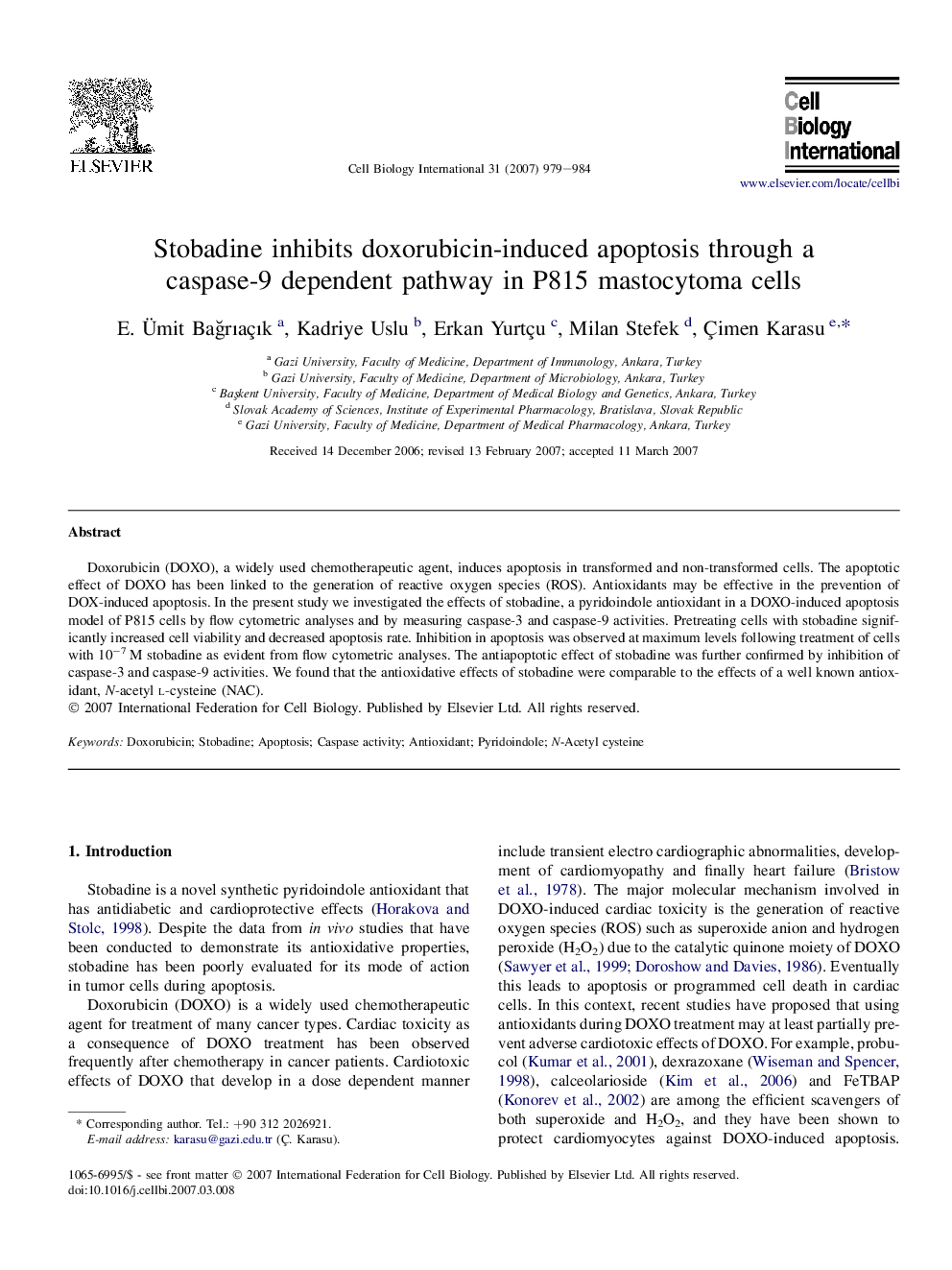| Article ID | Journal | Published Year | Pages | File Type |
|---|---|---|---|---|
| 2067697 | Cell Biology International | 2007 | 6 Pages |
Abstract
Doxorubicin (DOXO), a widely used chemotherapeutic agent, induces apoptosis in transformed and non-transformed cells. The apoptotic effect of DOXO has been linked to the generation of reactive oxygen species (ROS). Antioxidants may be effective in the prevention of DOX-induced apoptosis. In the present study we investigated the effects of stobadine, a pyridoindole antioxidant in a DOXO-induced apoptosis model of P815 cells by flow cytometric analyses and by measuring caspase-3 and caspase-9 activities. Pretreating cells with stobadine significantly increased cell viability and decreased apoptosis rate. Inhibition in apoptosis was observed at maximum levels following treatment of cells with 10â7Â M stobadine as evident from flow cytometric analyses. The antiapoptotic effect of stobadine was further confirmed by inhibition of caspase-3 and caspase-9 activities. We found that the antioxidative effects of stobadine were comparable to the effects of a well known antioxidant, N-acetyl l-cysteine (NAC).
Related Topics
Life Sciences
Biochemistry, Genetics and Molecular Biology
Biophysics
Authors
E. Ãmit BaÄrıaçık, Kadriye Uslu, Erkan Yurtçu, Milan Stefek, Ãimen Karasu,
